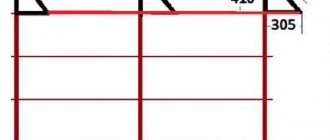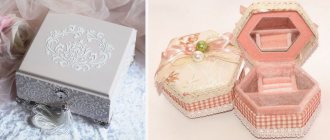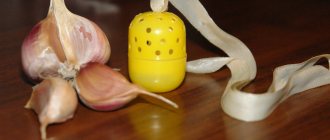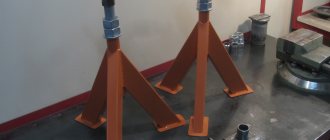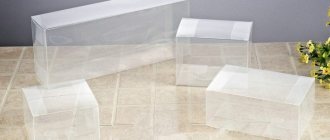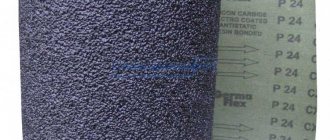Every city dweller sooner or later faced the problem of storing apples in winter. Unfortunately, in city apartments nothing is provided for this case, but this does not mean that you cannot create a special place for storing apples with your own hands.
If you approach the issue wisely, you can design a thermal box with your own hands. For apples, it is important to observe certain storage conditions, and a special box will help create and maintain the necessary conditions.
Let's start with the fact that absolutely all varieties of apples love coolness, so the best place for storage would, of course, be a balcony. Let's look at the main components of successful apple storage:
- apples will be preserved well only in the temperature range from -2°C to 5°C;
- it is preferable to place the fruits in wooden boxes (when the tree comes into contact with the apple, the impact on the fruit is minimal);
- the optimal humidity threshold is kept at 90-95%; at lower humidity, apples may wilt;
- the apple storage box should be well ventilated;
- apples must be placed correctly. There are several options for laying fruits: simply lay the apples in layers (but if a rotting area occurs, a large number of fruits may be damaged), wrap each apple in paper, sprinkle with sand, dry leaves, sawdust, and onion peels. You can also put apples (up to 4 kg) in a plastic bag, in which put a piece of cotton wool moistened with vinegar, alcohol (apples will remain fresh for a very long time);
- For storage you need to choose special varieties of apples; not every variety can be stored. It is better to give preference to winter varieties of apples that have thick skin with a waxy coating.
All of the above can be taken into account and organized, but how to maintain the temperature regime on the balcony in winter? A box for storing apples in winter with an electric heating system built into it will help you with this.
Methods for storing apples
Fresh fruits can be stored in bulk or in containers, boxes, and other containers. Places for fruit storage are as follows:
- basements, cellars, bunkers and other cool rooms with natural ventilation;
- fruit storage facilities with ventilation systems that remove excess moisture and heat (general ventilation);
- refrigerating chambers with a controlled gas environment (CGM). Here, not only the temperature and humidity are maintained at a given level, but also the content of oxygen, CO2, and nitrogen;
- dynamic gas environment system. The atmospheric parameters in the storage facility are constantly monitored, and the system automatically adjusts them.
For the second and third storage methods, GOST standards are provided - 27819-88 and 50528-93, respectively.
Before the invention of all kinds of refrigeration units, it was recommended to store apples intact in the cellar. To increase shelf life, it was necessary to place the fruits in dry barrels, layering them with finely chopped straw, ash, and sand. The easiest way to store it is in holes filled with dry leaves and covered with boards. But in such conditions, a rare fruit will survive until spring.
Making a plant box
Step 1. First of all, you need to decide on the dimensions of the box being constructed. It is important to choose the place where it will stand. Based on this, you should sketch out a drawing of the box indicating the dimensional parameters and calculate how much material is required.
First you need to decide on the sizes
Step 2. Next, you need to go to the store and purchase everything you need. First of all, you need to buy the required amount of boards.
Buy boards in the required quantity
Step 3. Now you need to apply the appropriate markings to the board - mark the sides and ends of the box on it. It is better to take measurements with a tape measure, but to get even marks it is better to use a square.
Step 4. Next you need to assemble the box frame and drill holes in its sides. It is better to make several holes on each side.
Assembling the drawer box
Step 5. The boards on the sides of the box need to be connected together using self-tapping screws. You can also use nails, but connections with self-tapping screws are much stronger and of better quality.
Self-tapping screws are used for connection
Step 6. Next, you need to determine the size of the bottom of the box and cut the bottom itself from the board. It needs to be secured by drilling wooden holes and screwing screws along the bottom border of the box around the entire perimeter.
Attaching the drawer bottom
Step 7: It is important to be sure to drill a few drainage holes in the bottom of the plant box. They will ensure the drainage of excess water that will enter the soil during irrigation or rain.
Drainage holes are drilled
Step 8. It is important to sand all surfaces of the drawer so that they are smooth, pleasant to the touch and safe.
Step 9. Finally, the box can be painted, but it is better to coat it with varnish. This will make the box beautiful and additionally protect it from moisture.
Finished product painting
Video - Making a simple box
Construction of a fruit storage facility
Often, arched frameless hangars with a shallow foundation are built for fruit storage. They are almost 2 times cheaper than capital frame structures.
The hangar is made of thin sheet profiled metal, bent into an arc. The arches are secured to the foundation with anchor bolts or welding. Install end walls. The premises will be equipped with gates and a ventilation system. This method of construction has been known since 1949. Some self-supporting structures built 50 years ago are still standing. For the strength of the building, it is important to follow the technology of production and installation of arches and use high-quality building materials.
Tools for making an apple box
Wooden apple crates are made using special woodworking tools. The most important tool is a woodworking machine, which has a multifunctional device.
Such a machine can be of various types, but it is best to use a tabletop wood trimming machine to prepare wood for boxes. In addition to this machine, it is also important to have a hammer and nails on hand, a tape measure for important measurements, a pencil for marks and a right angle for measurements.
Types of coolers
The fruits are picked when the outside temperature is still quite high. For long-term storage, they must be cooled and subsequently maintained at a certain temperature.
For winter varieties, the temperature in the mass should be -1...+1 ℃, humidity 85-95%, they can be stored for 150-365 days. For summer apples, this period is 2 times less, and the temperature in the mass can be 0…+1 ℃.
The temperature in the fruit storage chamber is reduced using coolers:
- evaporative type. Water is used for cooling; the equipment is simple and economical;
- with intermediate coolant. A propylene glycol solution is used as a coolant. This is a vapor compression type of machine. Suitable for large storage volumes;
- complex mixing plants. They provide cooling, recirculation and addition of fresh air in the chamber with fruit.
Evaporators work in conjunction with powerful axial fans. Several air blowers can be assembled into one unit. The devices are equipped with a water collection tray and a heater.
Gravity evaporators operate without fans and do not create noise or drafts. Installed in rooms where people are present or particularly delicate products are stored.
Wood frame
An above-ground vegetable storage facility must have a high-quality frame made of durable and proven materials. At this stage, you can use wooden squirrels with a cross-section of 10x5.5 cm.
One of the options for constructing above-ground storage for vegetables and preparations.
The storage design we are considering provides for the presence of one vertical wall located at the end, as well as three inclined ones. The walls must be double to ensure good insulation of the room. It is recommended to leave a small gap of 5-6 cm between the inner and outer parts of the walls and fill in insulation, or lay a layer of thermal insulation during the construction stage.
- The first stage of frame construction is external and internal piping.
- Next, vertical racks, a vestibule ceiling for the front wall, and auxiliary racks, which are necessary to support the floor beam, are installed. The floor beam and inclined struts of the internal and external walls are being installed.
- Sheathing of the structure should begin with the internal walls. Old boards in good condition can be used here, which, in most cases, are suitable for use in conditions of temperatures close to zero and relatively high humidity. The main thing is that there is no mold on them.
- This sheathing should be protected from the outside using a roll of waterproofing material. The rolls are fastened overlapping each other by approximately 10–15 cm. The lower part of the material should be placed on foam plastic and secured with wooden slats.
- Then the outer wall is finished with boards, and an inclined gutter is fixed along the lower segment of the wall, which is necessary for draining water.
- The space between the outer and inner parts of the walls must be filled with heat-insulating material, which must be well compacted during installation. It is recommended to make the thermal insulation layer on the ceiling thicker.
An above-ground vegetable storage facility should have a roof that is similar in shape to a truncated pyramid. On top you need to put waterproofing in several layers. Fastening is done using mastic. The rolls are again laid in an overlapping manner. The joints of the rolls must be additionally coated with mastic.
Why is a controlled gas environment needed in a storage facility?
In the RGS chambers, metabolic processes slow down and fruit ripening is delayed. The result is that the nutritional value and appearance of the apples are preserved. They seem to be sleeping. Fruits can be stored in a controlled gas environment until June.
In RGS, the oxygen content decreases to 2-3%, fruit respiration and the release of heat, ethylene, and aromatic compounds decrease. The flesh turns brown less. It is impossible to completely remove oxygen, as the aroma disappears, the taste of the fruit changes, and a special disease appears - tanning.
The concentration of carbon dioxide in apple RGS fruit storage should not exceed 5%. The nitrogen content increases to 79-97%. Harmful microorganisms do not develop in such an environment, and apples do not get sick.
Mainly winter varieties with high shelf life are suitable for long-term storage in a controlled environment. They are removed only by hand, after reaching a certain degree of maturity. Keeping quality is influenced by many factors: soil characteristics, growing and harvesting conditions.
To prevent apples from quickly deteriorating after being removed from fruit storage (after all, a sudden change in conditions is a shock), they are treated with special preparations before storing.
How to choose storage technology for the apple variety?
Each apple variety requires its own temperature, humidity and gas composition. Therefore, the technology is being torn apart, focusing on pomological varieties.
It is important to determine whether storage will be short-term or long-term. If fruits are to be processed soon, they are placed in a fruit storage facility with general ventilation. There is no need to build expensive CGS cameras. Supply and exhaust ventilation is installed in the room, which supplies fresh air and removes waste products.
If you plan to sell fresh apples in winter, spring, early summer, then it is better to choose a chamber with an RGS. 3-4 months after harvest, the price of the fruit increases sharply, and well-equipped storage facilities will pay for themselves.
Dimensions
The dimensions of the fruit storage facility are discussed with the customer at the project approval stage. If necessary, it is possible to develop a design according to individual drawings, however, as practice shows, it is standard premises that are most popular. They have the following dimensions:
- for 2000 t – 18x42x5, 2x7 m;
- for 4000 t – 24x54x8, 4x10 m;
- for 5000 t – 24x72x6.8x9 m;
- for 10,000 tons – 34x86x9, 4x12 m.
Complete BMZs, according to individual requirements for any purpose and complexity, are built with spans from 18 to 60 m. As for the size of the structure, it is better to start with small or medium-sized structures, gradually expanding the warehouse premises.
Project
The design of fruit storage facilities for apples for 100, 500 or 1000 tons (the price of construction depends on the area of the facility) is carried out taking into account numerous sanitary and hygienic requirements, as well as based on the wishes that the customer puts forward for the finished structure. Today, all premises for storing agricultural products are classified according to a number of basic criteria:
- method of storing crops. There are open, container and combined types of structures. In the first case, fruits are stored in bulk on the floor; this option is suitable for hard varieties, the surface of which can withstand heavy loads during unloading of products. Container-type premises have special containers and levels for storing fruits. Combined warehouses combine both types of structures;
- duration of crop storage. The structures can be used seasonally or year-round. If you plan to use the room on an ongoing basis, it will need to be additionally insulated using monolithic foam concrete, granulated foam glass, ecowool or basalt material;
- option to maintain an optimal microclimate. We are talking about arranging permanent ventilation, organizing a system capable of providing artificial cold, and automating a complex with a controlled microclimate.
The development of any project consists of geological and geodetic work, which involves topographic survey of the site, study of soil characteristics and collection of information about the level of groundwater. Planning and designing on site allows us to bring any customer’s wishes to life.
Read about the development of technical documentation for a 5000-ton fruit storage facility in a separate article.
Construction stages
In recent years, BMZ technology has been increasingly used in agriculture. This is not surprising, because the construction of fruit storage facilities from LSTK and LMK costs 3-4 times less than the construction of permanent structures made of brick or foam concrete. Thin-walled steel structures are able to withstand sudden temperature changes, they are resistant to aggressive environments, and can be used in regions with difficult climatic conditions. In addition, the construction of such fruit storage facilities consists of several simple steps, namely:
- preparing the site for construction, waste removal;
- arrangement of the foundation (a lightweight foundation is used - strip or pile-screw);
- assembly of a metal frame;
- formation of walls from sandwich panels;
- construction of floors, partitions and supports;
- installation of ventilation systems, cooling, etc., additional equipment;
- installation of door and window openings;
- interior and exterior decoration of the premises.
How to choose equipment for creating a WGS?
An insulated frameless hangar can be turned into a fruit storage facility if you install sealed gates, a nitrogen generator, equipment for removing excess carbon dioxide and oxygen, and an ethylene adsorber. It is necessary to equip the chamber with sensors, a cooling system and air humidification/dehumidification.
Three types of equipment for regulating the gas environment are common:
- CA (controlled atmosphere). The simplest option for equipping an RGS camera. Here oxygen is maintained at a level of 2.5...4%, CO2 - 3...5%;
- ULO (ultra-low oxygen). Oxygen 1…2.5%, carbon dioxide adsorber and nitrogen generator installed;
- DCA (Dynamic Controlled Atmosphere). The most effective, but expensive camera equipment. A control system is provided to maintain a minimum oxygen concentration. The composition of the atmosphere changes as quickly and accurately as possible.
The equipment is selected based on the volume of fruit storage and the specifics of the varieties. Pay attention to the energy consumption class. The higher it is, the more economically energy will be consumed. The installation method and ease of control are taken into account.
At the initial stage of doing business, you can build a sealed chamber, equipping it only with ventilation. And over time, purchase the necessary equipment to maintain an optimal atmosphere.
Rules for placing containers with harvest
Due to the nature of the arched structure, it is necessary to install retaining walls on the sides so as not to damage the arches. This will allow you to make maximum use of the useful internal space.
Containers are placed in stacks according to a pre-drawn plan, leaving space for monitoring the condition of the fruits and loading and unloading operations. Some boxes from one batch should be positioned so that the markings are visible from the aisle. If the area of the fruit storage chamber is less than 100 square meters. m, then there is no need to make passes.
The distance from the wall to the boxes closest to it must be at least 30 cm. A similar requirement applies to the distance between the ceiling and the top of the stacks of apples. There must be at least 80 cm to air ducts, cooling and heating devices.
If apples of different varieties are placed in one chamber, then varieties with a shorter shelf life are placed closer to the exit.
Properties of a wooden box
Why, despite the emergence of cheaper and simpler competitors, does an ordinary wooden box not lose its popularity? It's simple - the answer to this question lies in the unique properties and features of such containers.
Table. Comparison of box characteristics.
| Drawer type | Advantages and disadvantages |
| Veneer | Such a box is made from planks that have virtually no processing. It is quite fragile compared to wood, but costs less. Suitable for storing and transporting fruits and vegetables, as well as other products. Afraid of moisture. |
| Made of plastic | A fairly convenient type of box that is not at all afraid of moisture. Depending on the quality of the plastic, it can be either very durable or quite fragile. But this type of box is still easier to damage than a regular wooden one. It doesn’t cost much, but it’s more expensive than a wooden product. Suitable for storing and transporting not only dry, but also wet products. |
| Made of metal | A species that is quite rare. Metal boxes have not become popular due to their tendency to rust, as well as their heaviness and high price. It is not easy to make a metal box at home without special equipment. |
| Made of wood | The most optimal type of box. It is quite durable, can have different designs, and is suitable for storing all kinds of products. Looks much better than a regular veneer box. When used as a decorative finish, it can be used at home; it is durable if the wood has been treated with protective compounds. |
On a note! Ordinary wooden boxes of simple design are actively used when decorating loft-style rooms. They are an excellent attribute of this design solution.
The production of wooden boxes in production occurs in accordance with GOST 20767-75 . And for them, a wooden board of a certain quality, 1 cm thick, is used. Such boxes are thin-walled, but durable. They are quite light and easy to use.
Tool cabinets, drawers, cabinets
Prices for construction boards
Processing apples during long-term storage
Healthy, undamaged fruits should be placed in storage. For chambers with RGS, fruits taken are taken by hand, preserving the stalk. It is advisable to sort the apples by size. Large and small fruits store less well, so they must be sold first. Damaged fruits are sent for processing. They are used to make cider, jam, mashed potatoes, vinegar and other products.
Before long-term storage, it is recommended to treat fruits with a drug that slows down ethylene biosynthesis. It is called 1-MPC (1-methylcyclopropene). Ethylene molecules are replaced by drug molecules, which stops ripening. The advantage of this processing is that after removal from fruit storage, apples retain their consumer qualities longer.
If fruits are placed in a normal atmosphere, then after treatment with an inhibitor they can last 2 times longer. The drug is safe for humans and animals at the stage of production and use.
Varieties with thin skin and tender juicy pulp are poorly stored. To increase the time, they are treated with a water-wax emulsion. Apples must be dry and clean before processing. The fruits are placed in a fruit storage after complete drying. When selling fruit boxes, they are marked with a mark indicating that they have been waxed.
We are building a cellar on the balcony
Before manufacturing, you should decide on the functions of the container and what products will be stored in it. You also need to think about how to maintain the optimal temperature in the cellar in winter. The design of the box will depend on this.
Before you start building a cellar on the balcony with your own hands, you should decide on its shape and calculate its dimensions. If you have a large family, you need a large cabinet for vegetables; if you have a small family, a compact thermal container will be enough.
Remember: to keep vegetables fresh longer, you should take care of high-quality insulation and ventilation of the balcony and the box itself.
